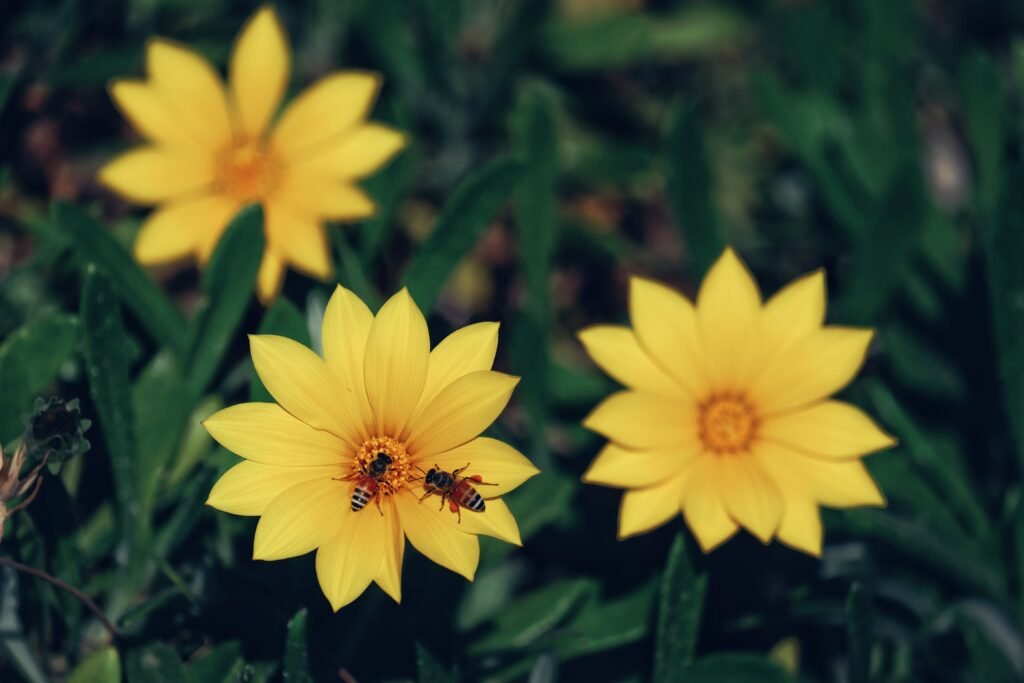Coreopsis is a flowering plant known for its daisy-like flowers that come in various shades of yellow, pink, and red. It is native to North America and is commonly found in prairies and meadows. Coreopsis flowers are not only attractive to humans but also to pollinators like bees and butterflies.
About Coreopsis:
Coreopsis is a genus of flowering plants that includes various types such as lanceleaf, tickseed, and threadleaf. These plants have different characteristics and growth habits, but they all offer beautiful blooms and are relatively easy to grow.
Coreopsis has a perennial life cycle and blooms from early summer to fall, providing a prolonged period of vibrant flowers. Its extended bloom time makes it an excellent choice for adding color to your garden throughout the season.
Characteristics:
Coreopsis plants are known for attracting bees, butterflies, and hummingbirds, making them a great addition to pollinator gardens. They are also easy to grow and maintain, making them suitable for both experienced and novice gardeners. While they are not considered edible, some species may have a slight fragrance.
Furthermore, Coreopsis plants are ornamental, commonly used in borders, containers, or as cut flowers. They are fast-growing, which means you will see results and blooms quickly.
Growing Conditions:
Coreopsis plants prefer growing conditions that include well-draining soil and full sun exposure. They are drought tolerant once established and can handle a wide range of soil types. In terms of maintenance, Coreopsis plants require regular watering, especially during dry periods.
Resistance:
When it comes to resistance, Coreopsis plants are generally resistant to deer and rabbits, making them a good choice for gardens prone to wildlife damage. However, they can be susceptible to plant diseases such as rust, fusarium wilt, downy mildew, and powdery mildew, so it is essential to monitor their health and provide proper care.
| Season | Depth | Height | Spacing | US Hardiness Zone |
|---|---|---|---|---|
| Spring | 1 to 2 inches | 1 to 3 feet | 12 to 18 inches | 4 to 9 |
Plant Care Instructions
Light Requirement
Coreopsis thrive best in full sun. They can tolerate some partial shade but avoid full shade as it can lead to leggy growth and fewer flowers.
Water Need
Coreopsis has average water needs. Water plants regularly, especially during dry spells. Make sure to let the soil dry out between waterings to prevent root rot.
Fertilizer
Coreopsis does not require heavy fertilization. A balanced organic fertilizer such as a 10-10-10 or 20-20-20 can be applied in spring before new growth starts. You can also use compost or organic granular fertilizers for a more natural option.
Pruning
Deadhead spent flowers to encourage continuous blooming. Cut back the entire plant by one-third in early summer to promote bushier growth. In late fall or early spring, you can cut back the plant to just a few inches from the ground to rejuvenate it.
Toxicity
Coreopsis plants are non-toxic to humans and pets, making them a safe choice for gardens or landscapes.
Common Issues
Common issues with Coreopsis include powdery mildew, aphids, and leaf spots. Monitor your plants regularly for signs of these problems and treat with appropriate organic remedies if necessary.
Culinary Benefits:
- Coreopsis flowers can be used as a decorative garnish in salads and other dishes.
- The petals of certain species of Coreopsis can be used to add color and flavor to soups, sauces, and desserts.
- Dried Coreopsis flowers can be used to make herbal teas.
- Coreopsis leaves can be used as a substitute for spinach in recipes.
Medicinal Benefits:
- Coreopsis has been traditionally used in Native American medicine to treat stomachaches and respiratory conditions.
- The plant contains compounds that have anti-inflammatory and antimicrobial properties.
- Coreopsis tea can be used to relieve menstrual cramps and menstrual irregularities.
- Coreopsis extracts may have potential benefits in lowering blood pressure and improving cardiovascular health.
- The plant is also believed to have immune-boosting properties.
Companion Plants for Coreopsis:
1. Echinacea: These beautiful cone-shaped flowers not only complement the bright yellow blooms of coreopsis but also attract pollinators like bees and butterflies.
2. Salvia: With their vibrant purple or blue flowers, salvias create a stunning contrast when planted alongside coreopsis. They also have a similar preference for full sun and well-drained soil.
3. Russian Sage: This perennial plant features silvery-gray foliage and tall spikes of lavender-blue flowers, creating a perfect backdrop for the golden hues of coreopsis.
4. Black-eyed Susans: These daisy-like flowers are a classic companion to coreopsis. They both thrive in similar conditions and create a cheerful and vibrant display when grown together.

